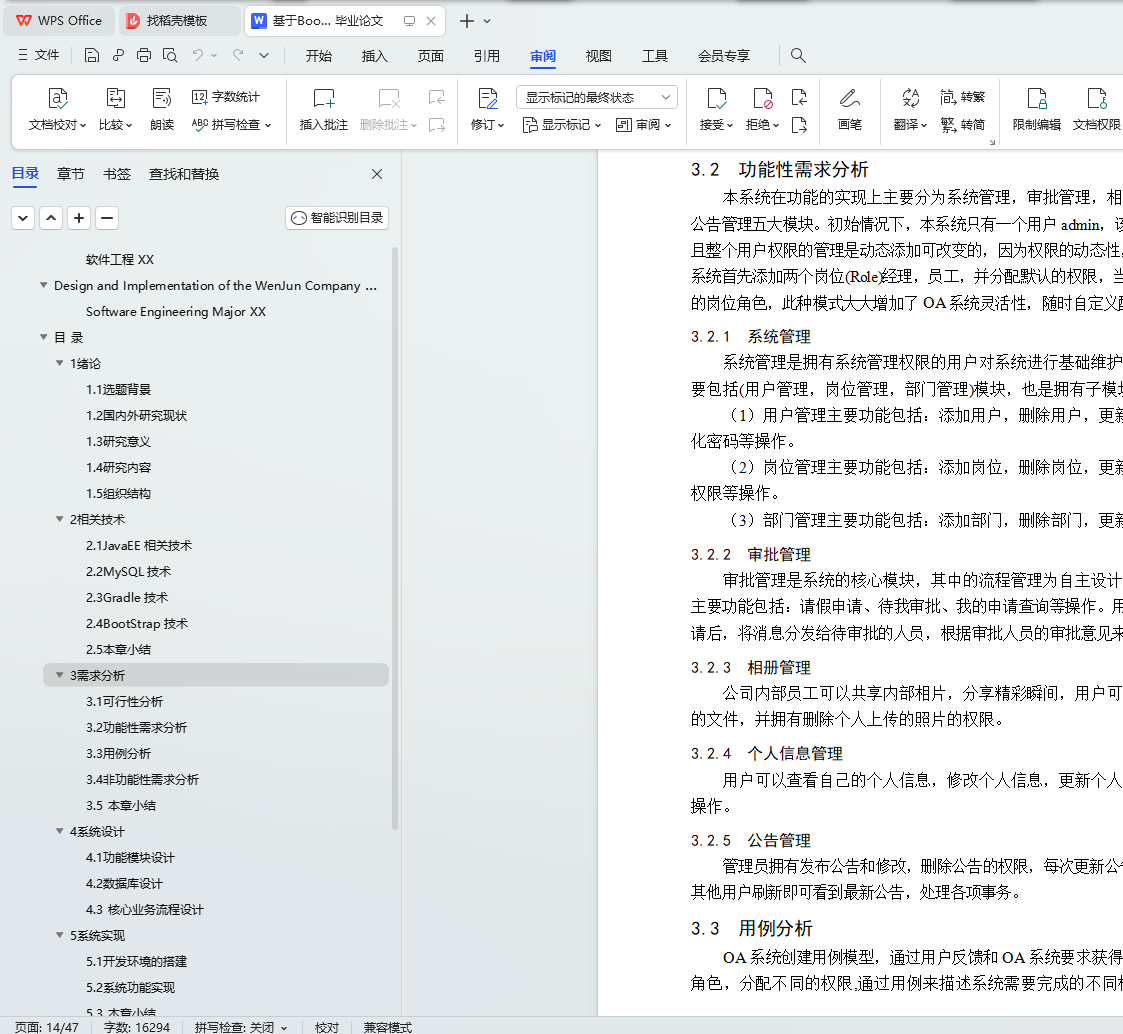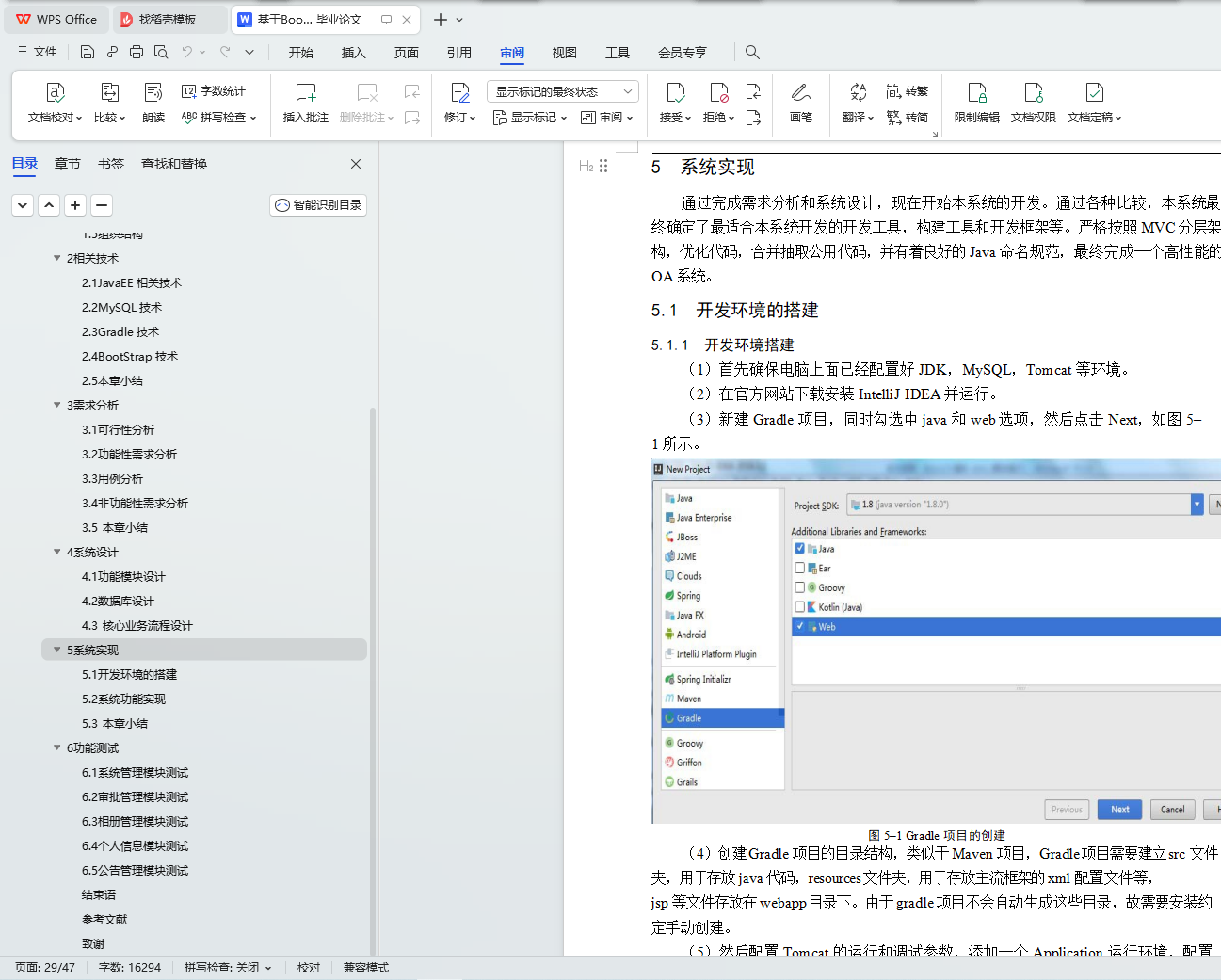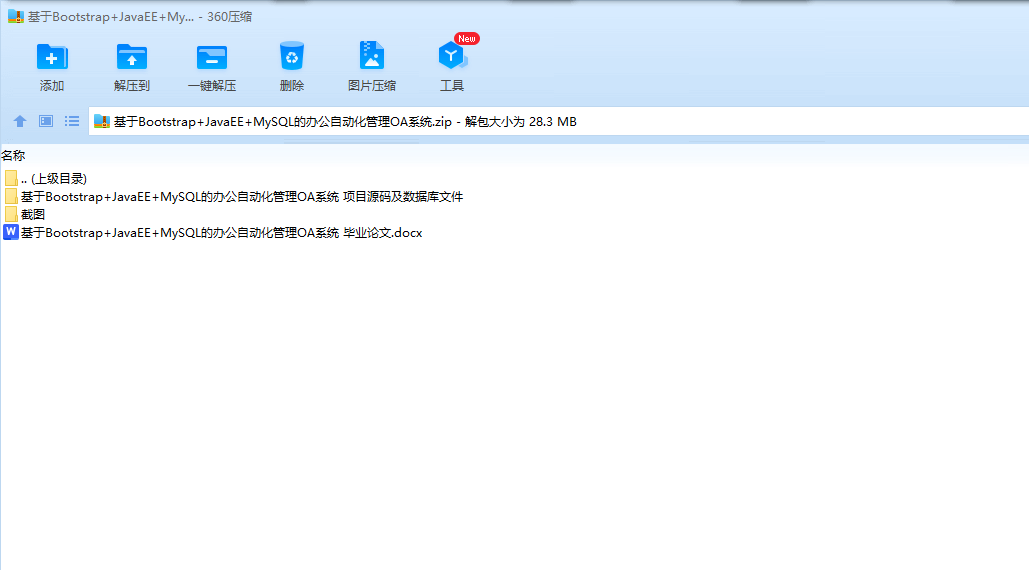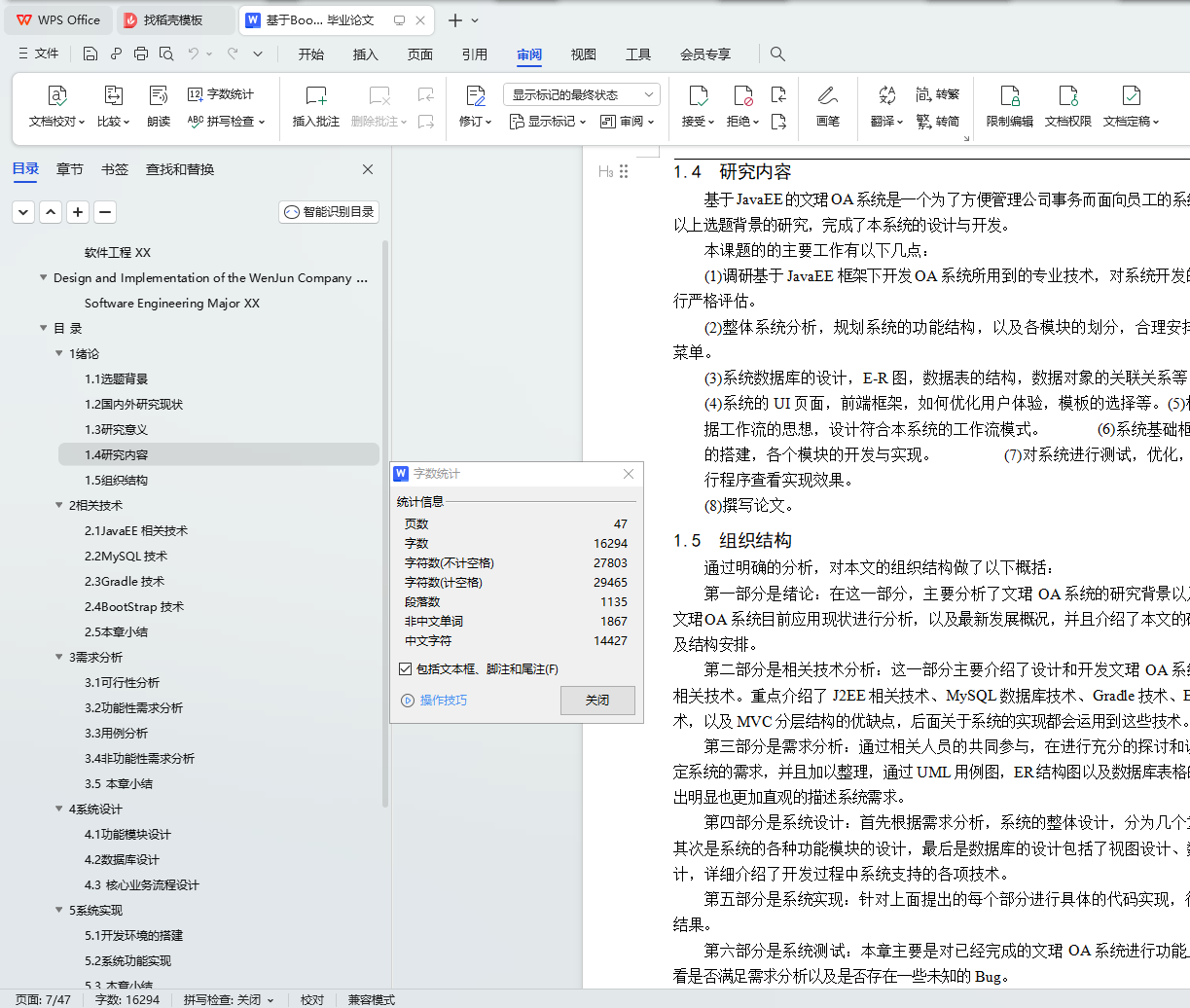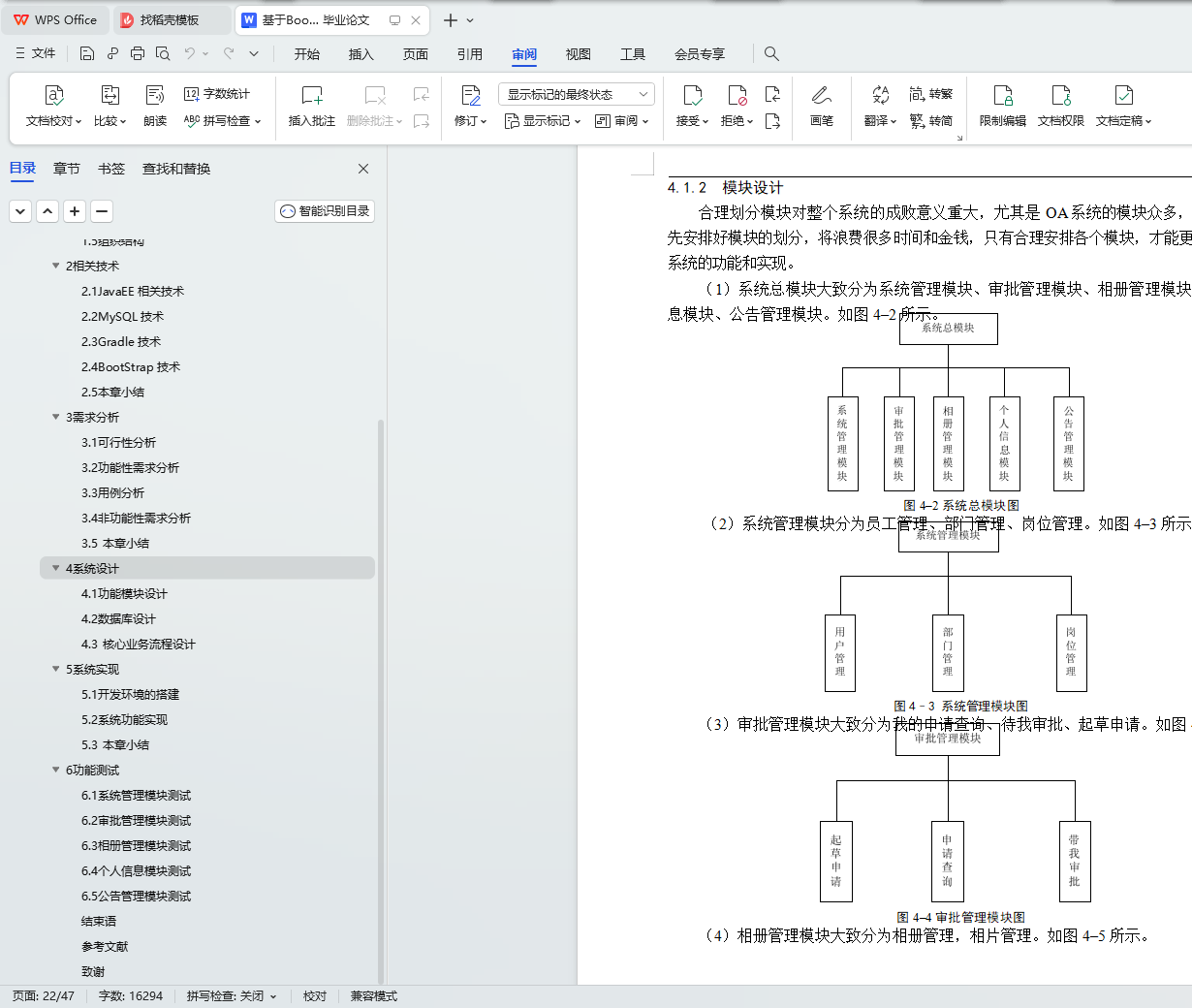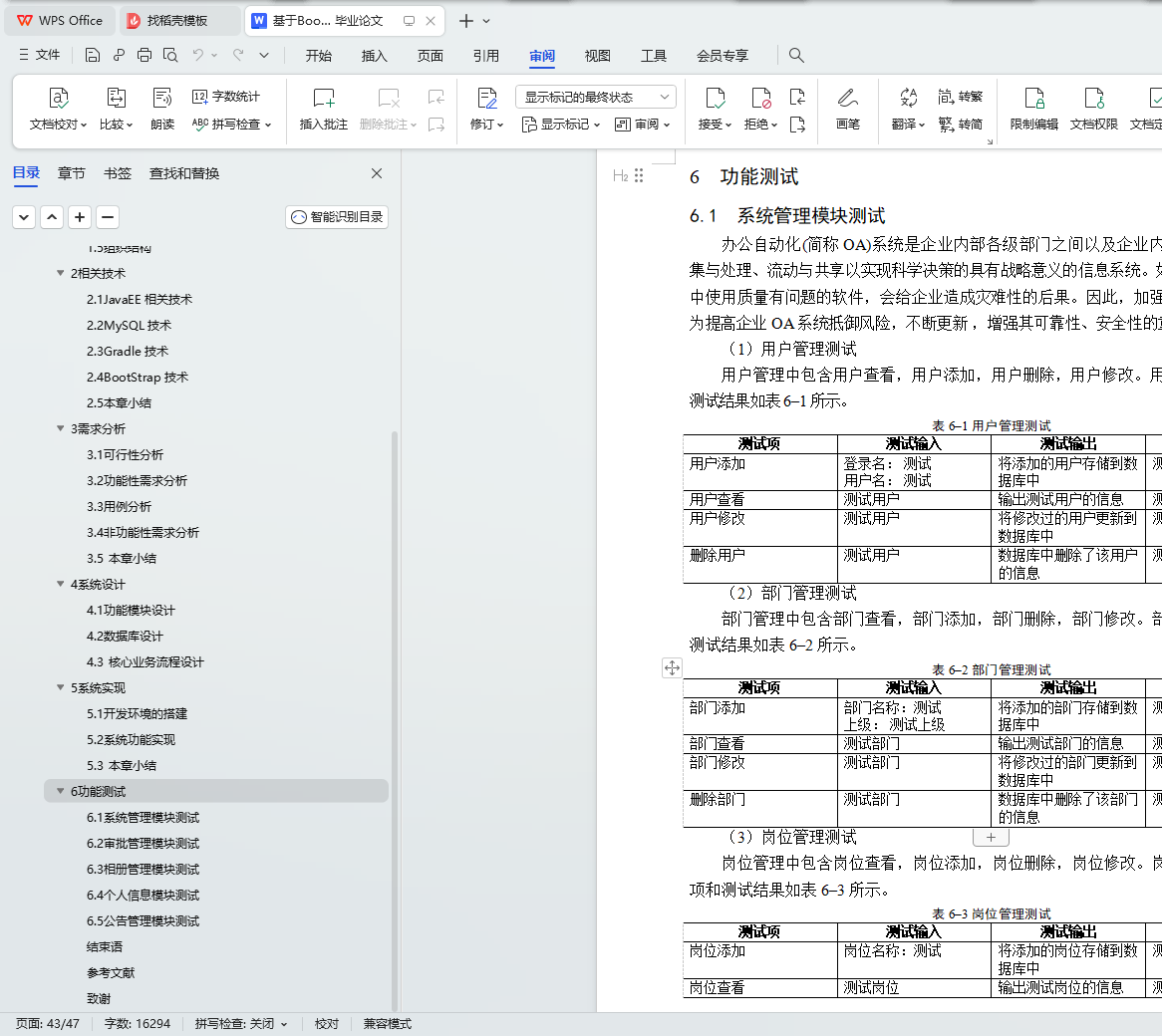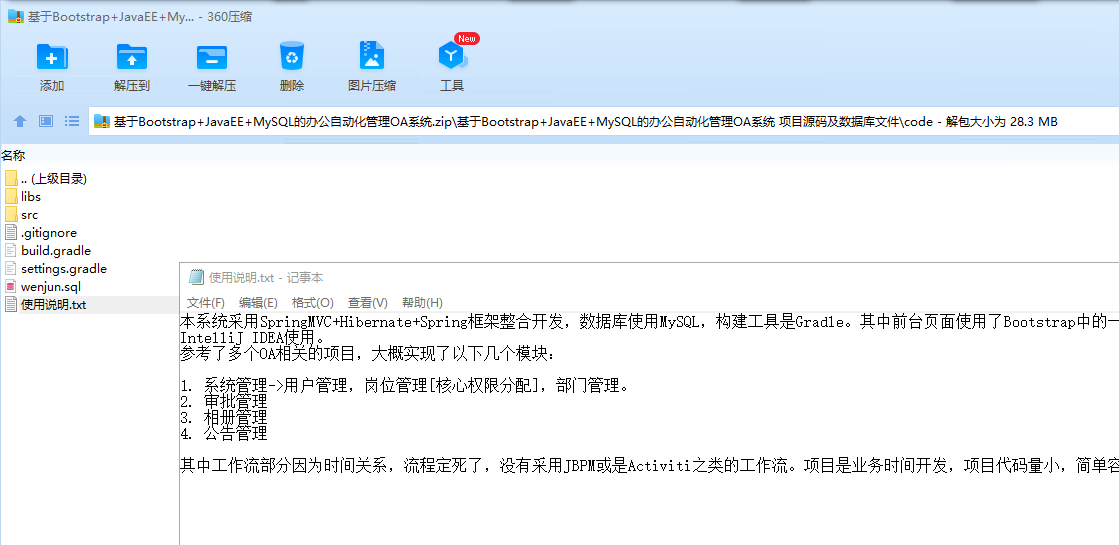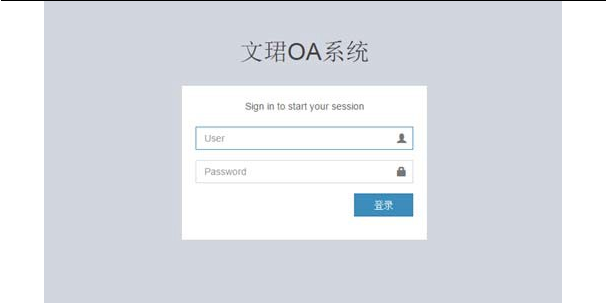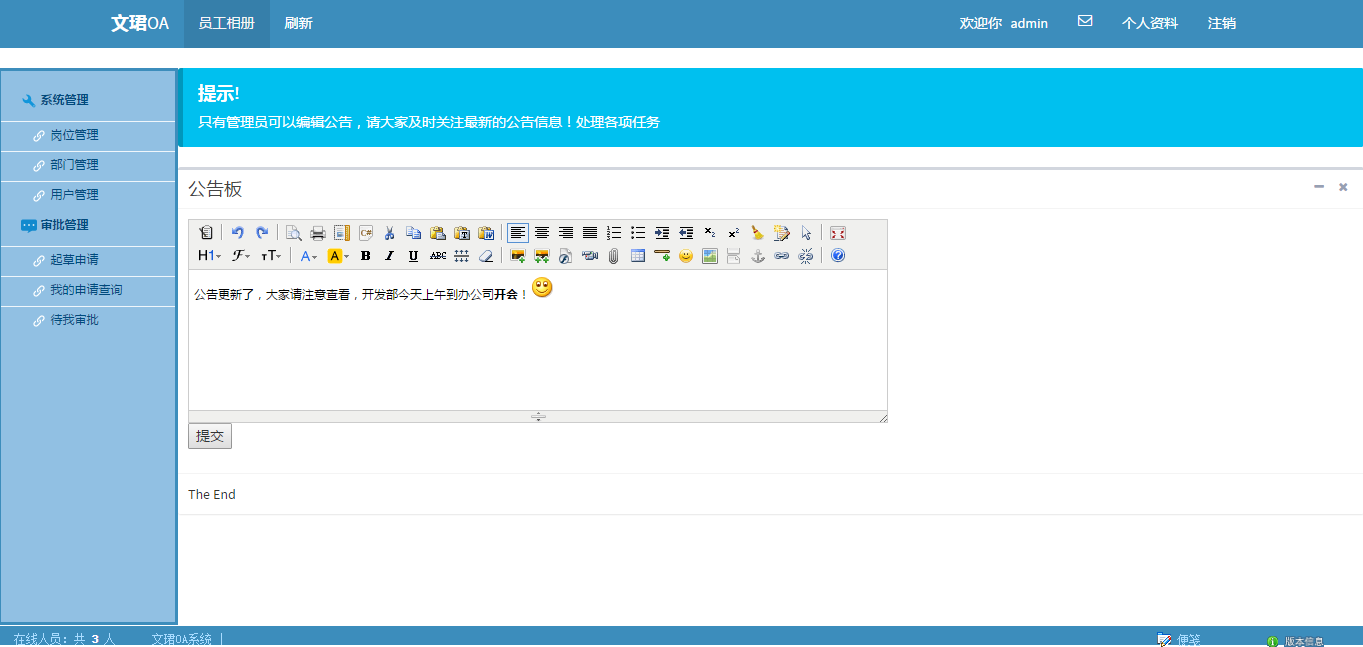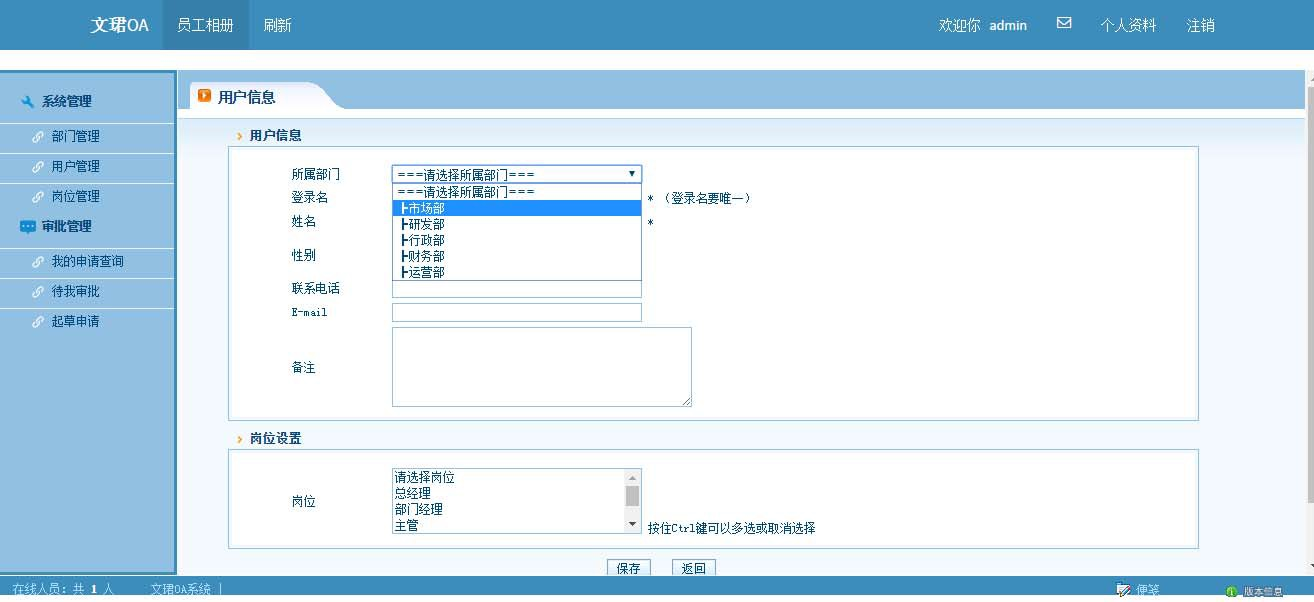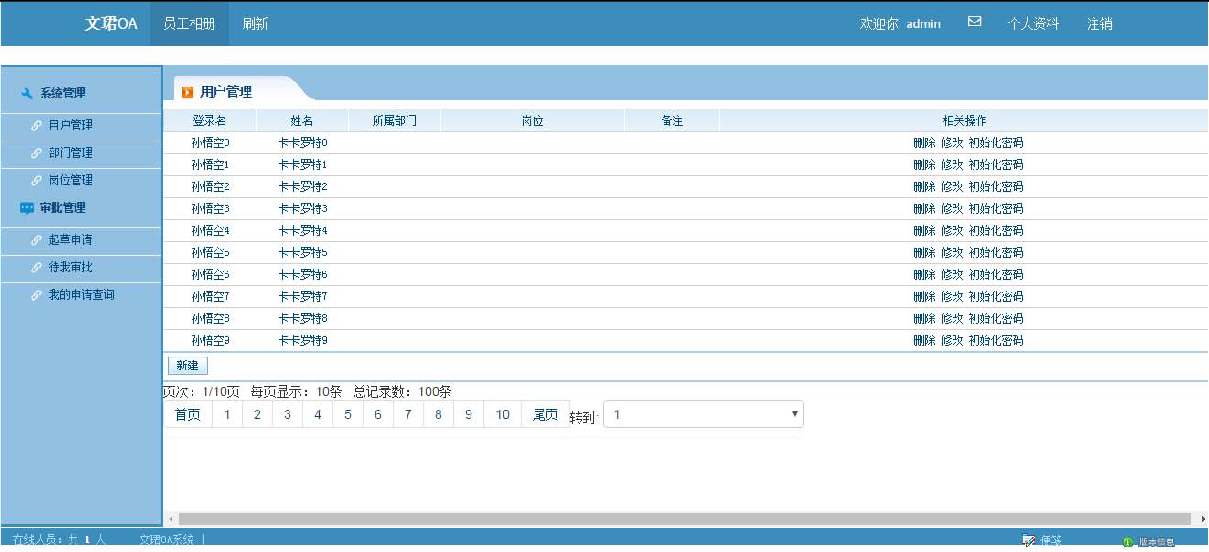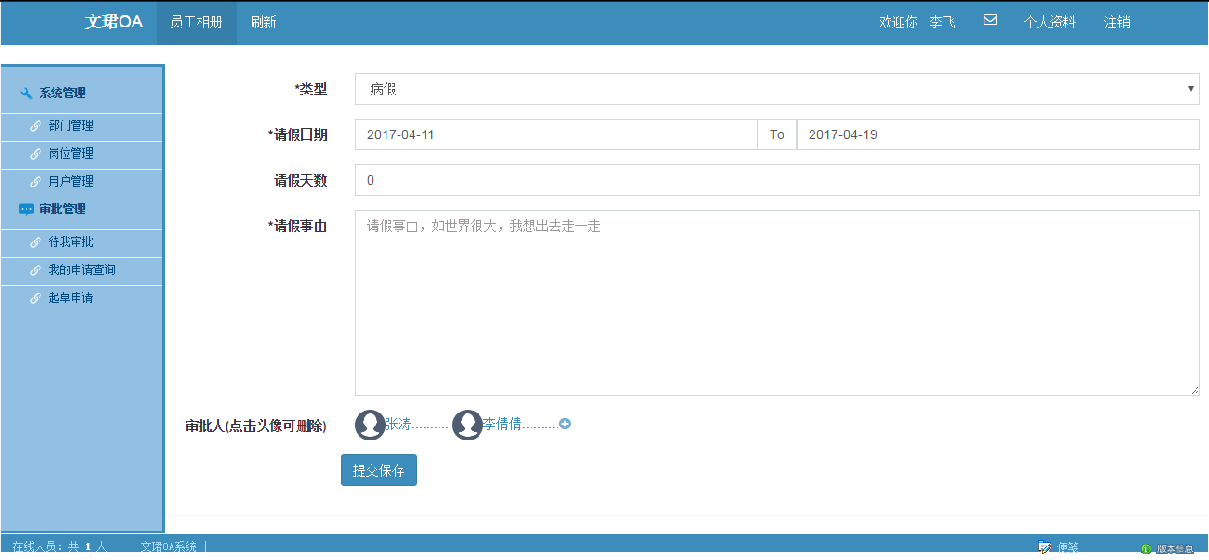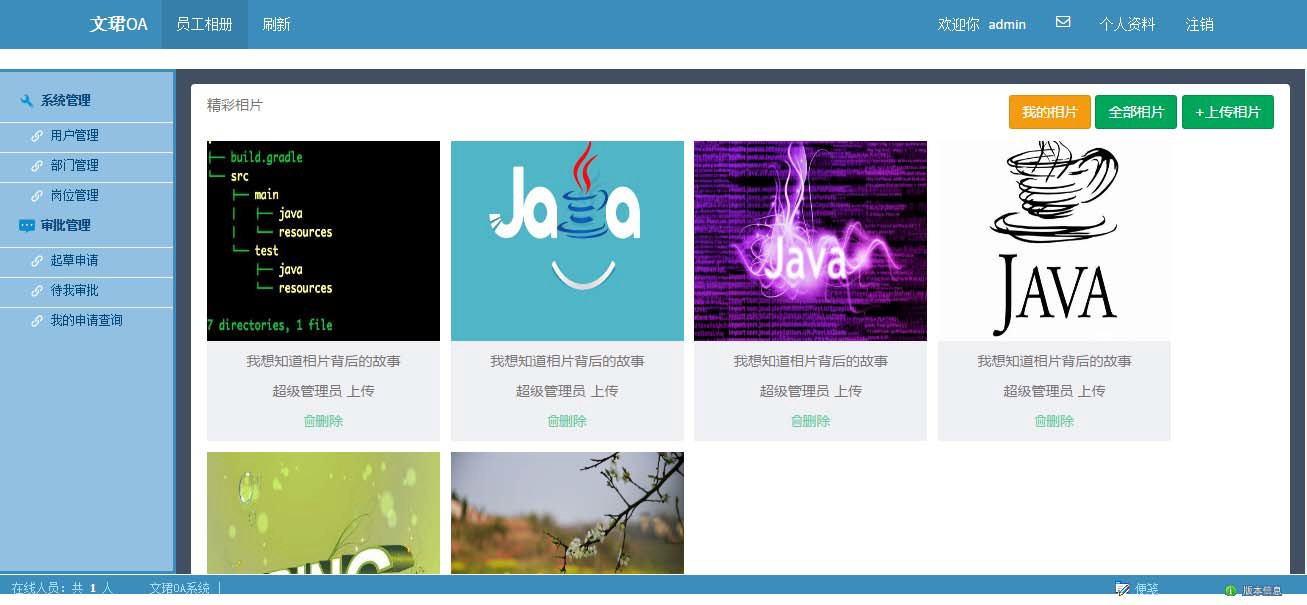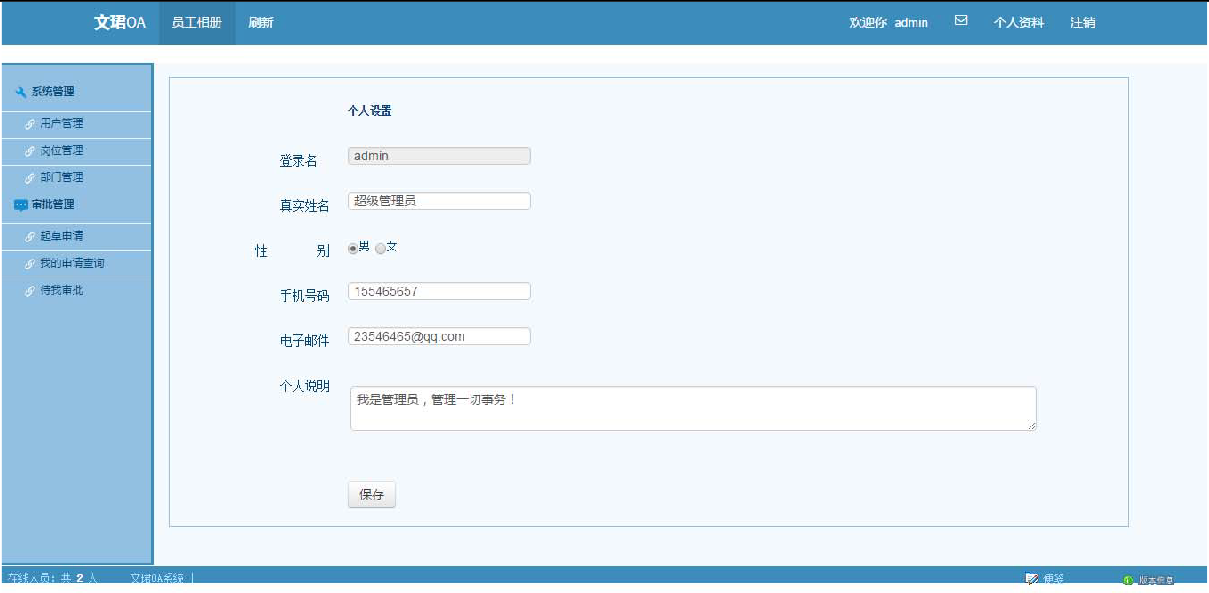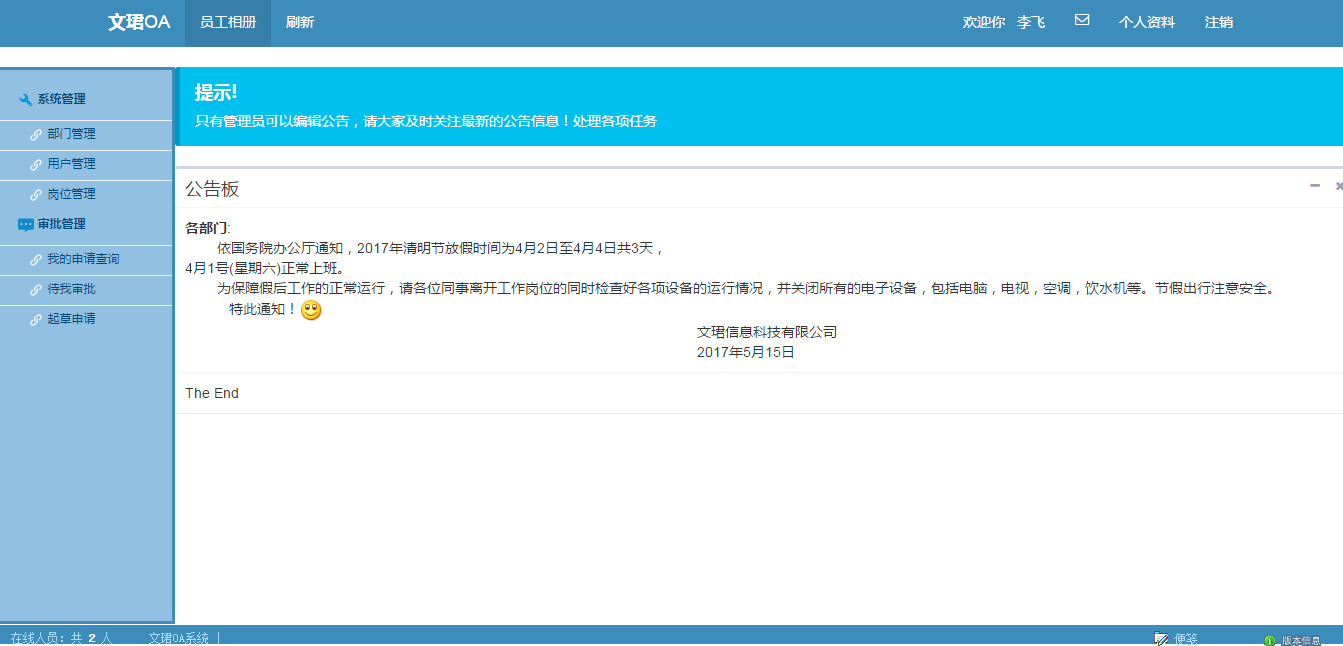基于Bootstrap+JavaEE+MySQL的OA办公自动化管理系统
软件工程 XX
[摘 要] 当今互联网技术发展的非常迅速,而以往的定点办公模式已经不能满足现代人们的需要,迫切地需要我们设计一款办公自动化的 OA 系统才可以解决目前日益突出的问题。本系统采用了 Java 开发工具 IntelliJ IDEA,数据库 MySQL 和轻量级框架
SpringMVC,Hibernate,Spring 开发出基于 JavaEE 的文珺 OA 系统。本课题主要实现了用户,部门,岗位等模块的增删改查,请假流程的审批,公共相册管理,个人信息管理, 公告管理等功能。其中岗位管理中实现了对不同用户角色的权限管理,根据不同用户的角色授权登录系统而划分不同的功能模块。核心工作流采用自主设计的方式实现,无风险控制流程管理,解决了定点办公方式的局限性,最终实现信息以无线的方式进行流转, 对提高人们的办公效率和改善企业的办公生产能力,减少企业运营成本有着重大的意义。
[关键词] OA;办公系统;J2EE
Design and Implementation of the WenJun Company OA Based on JavaEE
Software Engineering Major XX
Abstract: Today, the development of Internet technology is fast, and the past fixed-point office model has been unable to meet the needs of modern people, the urgent need for us to design an office automation OA system can solve the increasingly prominent problems. The system uses the Java development tools IntelliJ IDEA, database MySQL and lightweight framework SpringMVC, Hibernate, Spring developed Java EE-based OA system. This topic mainly to the user, department, post and other modules to delete or delete, leave the approval process, public photo album management, personal information management, bulletin management and other functions. Which in the post management to achieve the different user roles of the rights management, according to the role of different users authorized to log in the system and the division of different functional modules. The core workflow is implemented in the way of independent design, and the risk management process is managed to solve the limitation of the fixed-point office. Finally, the information is transmitted in a wireless way, which improves the office efficiency and improves the office productivity of the enterprise. Business operating costs are of great significance.
Key words: OA; office system; J2EE

目 录
1 绪论 1
1.1 选题背景 1
1.2 国内外研究现状 1
1.3 研究意义 1
1.4 研究内容 2
1.5 组织结构 2
2 相关技术 3
2.1 JavaEE 相关技术 3
2.1.1 SpringMVC 框架 3
2.1.2 Hibernate 框架 4
2.1.3 Spring 框架 4
2.1.4 MVC 框架技术 5
2.1.5 Tomcat 服务器 5
2.2 MySQL 技术 6
2.3 Gradle 技术 6
2.4 BootStrap 技术 6
2.5 本章小结 7
3 需求分析 7
3.1 可行性分析 7
3.1.1 技术可行性 7
3.1.2 经济可行性 7
3.1.3 操作可行性 7
3.2 功能性需求分析 8
3.2.1 系统管理 8
3.2.2 审批管理 8
3.2.3 相册管理 8
3.2.4 个人信息管理 8
3.2.5 公告管理 8
3.3 用例分析 8
3.3.1 系统总用例 9
3.3.2 系统管理模块用例分析 9
3.3.3 审批管理模块用例分析 10
3.3.4 相册管理模块用例分析 11
3.3.5  个人信息模块用例分析 12
个人信息模块用例分析 12
3.3.6 公告管理模块用例分析 12
3.4 非功能性需求分析 13
3.4.1 操作优化 13
3.4.2 系统可扩展性 13
3.5 本章小结 13
4 系统设计 13
4.1 功能模块设计 13
4.1.1 整体架构 13
4.1.2 模块设计 14
4.2 数据库设计 15
4.2.1 概念结构设计 15
4.2.2 系统 E-R 图 17
4.2.3 表结构 18
4.3 核心业务流程设计 20
5 系统实现 21
5.1 开发环境的搭建 21
5.1.1 开发环境搭建 21
5.1.2 Cradle 配置 22
5.2 系统功能实现 23
5.2.1 通用功能实现 23
5.2.2 用户登录 23
5.2.3 系统管理模块的实现 24
5.2.4 审批管理模块的实现 27
5.2.5 相册管理模块的实现 30
5.2.6 个人信息模块的实现 31
5.2.7 公告管理模块的实现 32
5.3 本章小结 33
6 功能测试 34
6.1 系统管理模块测试 34
6.2 审批管理模块测试 35
6.3 相册管理模块测试 35
6.4 个人信息模块测试 35
6.5 公告管理模块测试 35
结束语 36
 参考文献 37
参考文献 37
致谢 38
